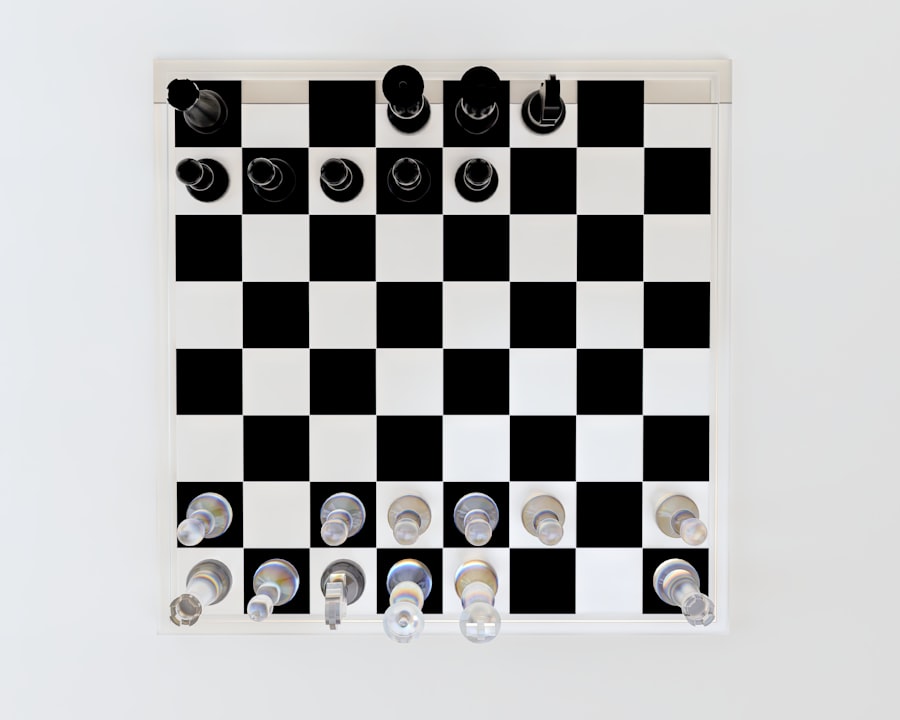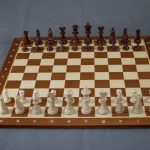Mastering Chess Online: Tips and Strategies
Description
Selecting the appropriate online platform for playing chess is a crucial first step for both beginners and seasoned players. The landscape of online chess is rich and varied, with numerous websites and applications catering to different skill levels and preferences. Popular platforms such as Chess.com, Lichess.org, and Internet Chess Club each offer unique features that can enhance the playing experience.
For instance, Chess.com is renowned for its user-friendly interface, extensive library of instructional videos, and a vibrant community that hosts regular tournaments. In contrast, Lichess.org is celebrated for its open-source nature and ad-free experience, making it a favorite among purists who appreciate a clean interface without distractions. When choosing a platform, it’s essential to consider factors such as the availability of learning resources, the quality of the user interface, and the community engagement.
Some platforms provide robust analysis tools that allow players to review their games in detail, while others may focus more on social interaction through forums and chat features. Additionally, mobile compatibility can be a significant factor for players who prefer to practice on the go. By evaluating these aspects, players can find a platform that not only suits their playing style but also fosters their growth as chess enthusiasts.
Key Takeaways
- Choose an online platform that suits your skill level and offers a user-friendly interface
- Understand the basic rules and mechanics of online chess, including how to move pieces and use the chess clock
- Develop an effective opening strategy to gain control of the center and develop your pieces
- Improve your midgame tactics by focusing on piece activity, pawn structure, and king safety
- Master endgame techniques such as king and pawn endings, opposition, and zugzwang to secure victory
- Utilize online resources and tools such as chess engines, databases, and tutorials to enhance your skills
- Analyze and learn from your online games to identify mistakes and improve your decision-making
- Stay mentally sharp and focused online by taking breaks, staying hydrated, and managing distractions
Understanding the Basics of Online Chess
Before diving into the complexities of strategy and tactics, it is vital to grasp the fundamental rules and mechanics of chess. The game is played on an 8×8 board with 64 squares, where each player commands an army of 16 pieces: one king, one queen, two rooks, two knights, two bishops, and eight pawns. Each piece has its own unique movement patterns; for example, rooks move in straight lines along rows or columns, while bishops traverse diagonally.
Understanding these movements is essential for both offense and defense. In addition to knowing how each piece moves, players must familiarize themselves with concepts such as check, checkmate, and stalemate. Check occurs when a king is under direct threat of capture, while checkmate signifies that the king has no legal moves left to escape capture.
Stalemate is a situation where a player has no legal moves but is not in check, resulting in a draw. These basic principles form the foundation upon which more advanced strategies are built. Players should also take time to learn about pawn promotion and en passant captures, as these rules can significantly influence game dynamics.
Developing an Effective Opening Strategy

The opening phase of a chess game sets the stage for the middle game and can often dictate the overall flow of the match. An effective opening strategy involves controlling the center of the board, developing pieces efficiently, and ensuring king safety through castling. One popular opening is the Ruy Lopez, which begins with 1.e4 e5 2.Nf3 Nc6 3.Bb5. This opening aims to control the center while simultaneously putting pressure on Black’s knight.
Another effective opening strategy is the Sicilian Defense, initiated by 1.e4 c5. This defense allows Black to counterattack while creating asymmetrical pawn structures that can lead to dynamic play. Players should familiarize themselves with various openings and their respective variations to adapt their strategies based on their opponent’s responses.
It’s also beneficial to understand the principles behind these openings rather than memorizing moves blindly; this knowledge will enable players to navigate unfamiliar positions with confidence.
Improving Your Midgame Tactics
| Tactic | Description | Importance |
|---|---|---|
| Control the center | Occupying and controlling the central squares of the board | High |
| Develop pieces | Bringing pieces into play and connecting them | Medium |
| King safety | Ensuring the safety of the king through castling and pawn structure | High |
| Tactical motifs | Recognizing and executing tactical patterns such as forks, pins, and skewers | High |
Once the opening phase concludes, players transition into the midgame, where tactical awareness becomes paramount. This stage often involves complex positions where players must calculate variations and anticipate their opponent’s moves. Tactics such as forks, pins, skewers, and discovered attacks are essential tools in a player’s arsenal during this phase.
For example, a fork occurs when a single piece attacks two or more enemy pieces simultaneously, forcing the opponent to make difficult choices. To enhance midgame tactics, players should engage in regular practice through puzzles and tactical exercises available on various online platforms. These exercises help sharpen calculation skills and improve pattern recognition.
Additionally, studying famous games played by grandmasters can provide insights into effective tactical maneuvers and strategic planning during the midgame. By analyzing how top players navigate complex positions, aspiring chess enthusiasts can develop their own tactical intuition.
Mastering Endgame Techniques
The endgame is often regarded as one of the most critical phases of chess, where precise technique can turn a slight advantage into victory or salvage a draw from a losing position. Understanding key endgame concepts such as king activity, pawn promotion, and piece coordination is essential for success in this phase. For instance, in king and pawn endgames, the active king plays a crucial role in supporting pawn advancement while preventing the opponent’s pawns from promoting.
Players should also familiarize themselves with fundamental endgame positions such as king and pawn versus king or rook versus king and pawn scenarios. Mastering these basic endgames allows players to convert winning positions effectively while also defending against potential threats. Online platforms often provide endgame training tools that simulate various scenarios, enabling players to practice their techniques in a controlled environment.
By dedicating time to endgame study, players can significantly improve their overall performance in matches.
Utilizing Online Resources and Tools

Interactive Learning Platforms
Websites like Chess.com and Lichess.org offer a range of interactive lessons, video tutorials, and articles that cover various aspects of chess theory and practice. These resources cater to different learning styles, ensuring that players can learn in a way that suits them best.
Game Analysis and Improvement
In addition to structured lessons, players can utilize tools such as analysis engines to review their games post-match. These engines provide valuable insights into mistakes made during play and suggest alternative moves that could have led to better outcomes.
Collaborative Learning Communities
Engaging with online communities through forums or social media groups allows players to share experiences, ask questions, and receive feedback from peers. This collaborative approach fosters a supportive environment where players can grow together, learn from each other, and improve their skills.
Analyzing and Learning from Online Games
One of the most effective ways to improve at chess is through self-analysis of past games. After each online match, players should take time to review their moves critically. Many platforms offer built-in analysis tools that highlight inaccuracies or blunders made during play.
By examining these moments closely, players can identify recurring mistakes or weaknesses in their strategy that need addressing. Additionally, studying games played by stronger opponents can provide valuable lessons in strategy and tactics.
Many online platforms allow users to watch live streams or recorded games featuring top players, providing an opportunity to learn from the best in real-time. By actively engaging in this analytical process, players can cultivate a deeper understanding of chess dynamics.
Staying Mentally Sharp and Focused Online
Maintaining mental sharpness and focus during online chess games is essential for optimal performance. The distractions inherent in online play—such as notifications from other applications or environmental noise—can significantly impact concentration levels. To combat this issue, players should create a dedicated playing environment that minimizes interruptions.
This could involve setting specific times for practice when distractions are at a minimum or using noise-canceling headphones to block out background sounds.
Regular physical exercise also contributes positively to cognitive function; studies have shown that physical activity boosts brain health and improves concentration levels.
By incorporating these practices into their routine, players can ensure they remain mentally agile during matches, allowing them to make better decisions under pressure. In conclusion, mastering online chess requires a multifaceted approach that encompasses understanding fundamental principles, developing strategic skills across all phases of the game, utilizing available resources effectively, and maintaining mental acuity during play. By committing to continuous learning and practice within this digital landscape, players can elevate their game and enjoy the rich complexities that chess has to offer.
If you’re looking to maximize your game of chess online, you should definitely check out the article on Taya777 titled Maximize Your Game with Taya777 Online Sports. This article provides valuable tips and strategies for improving your chess skills and taking your game to the next level.
FAQs
What is online chess?
Online chess refers to the practice of playing chess over the internet using a computer, smartphone, or other electronic device. Players can compete against each other in real-time or take part in turn-based games.
How does online chess work?
Online chess platforms provide a virtual space for players to connect and play games. Players can create accounts, search for opponents, and join games with people from around the world. Moves are made by clicking and dragging the pieces on the virtual board.
What are the benefits of playing chess online?
Playing chess online allows players to practice and improve their skills at any time, from anywhere with an internet connection. It also provides access to a larger pool of opponents, including players of varying skill levels.
Are there different types of online chess platforms?
Yes, there are various online chess platforms, each with its own features and user interface. Some platforms offer free play, while others require a subscription or payment for certain features or tournaments.
Can I play online chess for free?
Yes, there are many online platforms that offer free chess play. These platforms may have options for paid memberships or premium features, but basic gameplay is often available at no cost.
Is online chess safe and secure?
Most reputable online chess platforms take measures to ensure the safety and security of their users. This may include encryption of personal data, monitoring for cheating or abuse, and providing tools for reporting inappropriate behavior.





